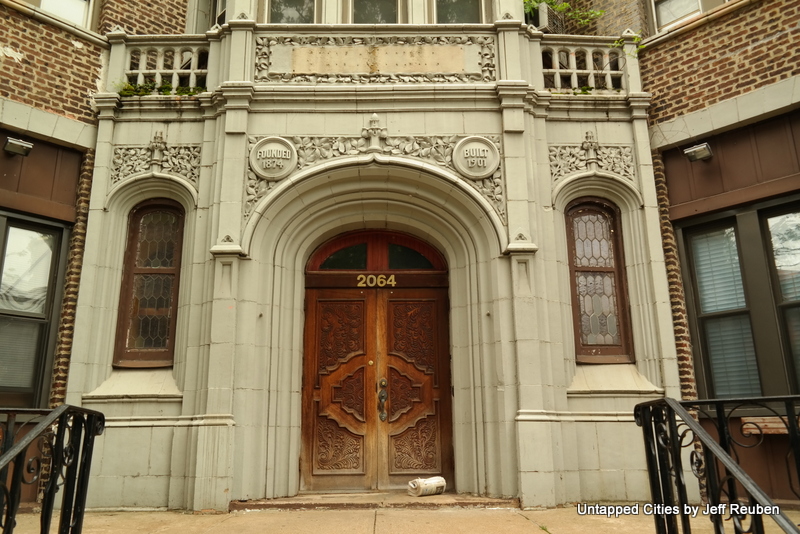At the corner of Boston Road and E. 179th Street in The Bronx, an early 1900s building that once provided free housing to older women of modest means will soon make way for a new low income housing development.
This building, at 2064 Boston Road in West Farms, was originally the Peabody Home for Aged and Indigent Women. It was a private charity that provided free accommodation for 35 women.
Completed in 1902, the Peabody Home has a center pavilion set back from the street corner and two wings extending along the side of the property. This configuration forms a front courtyard with a pathway flanked by lawns with trees, bushes, and flowers. Despite an elevated subway line across the street, constructed after the home opened, it retains much of its Victorian charm.

The exterior has several notable decorative elements, including four dog gargoyles standing guard along the front roof. Circular tablets above the arched doorway with raised lettering provide a quick history lesson: “Founded in 1874” (in Manhattan) on the left and “Built 1901” (though not finished until the following year) on the right. It was designed by British-American architect Edward A. Sargent.
The Peabody Home only stayed here until 1929, when it moved further north to another new building on Pelham Parkway. Since then, occupants have included the Booker T. Washington School and Home (an orphanage for African-American boys), the Circle Mission (a church of messianic preacher Father Divine), and temporary facilities for the Bronx River Art Center. It is owned and occupied by Comunilife, a non-profit affordable housing and health care provider.

Last year, Comunilife announced plans for a new 78-unit residential building containing a mix of low-income and supportive-housing apartments on the site. The Bronx Times reported that the new building is expected to be completed by 2020.
The old building still stands for now, but there is an approved demolition permit so it could go at any time. Comunilife, which did not respond to a request to comment for this article, is fully within its rights to replace it, as it is not a designated New York City Landmark. To be landmarked, a property must be at least 30 years old and have “a special character or special historical or aesthetic interest or value as part of the development, heritage, or cultural characteristics of the City, state, or nation.” Landmark designations are made by the Landmarks Preservation Commission, although they can be overruled by the City Council.
Given its history and architectural character, should the Peabody Home be landmarked and saved from the wrecking ball?
Arguments for Peabody Home landmarking are lent credence by a State Historic Preservation Office report which calls it “an outstanding example of Neo-Gothic style institutional architecture.” Additionally, apart from the Old West Farms Soldiers Cemetery, there are no designated landmarks in West Farms, one of the Bronx’s earliest settlements.

An opposing viewpoint is that there are already several landmarked early 20th century institutional buildings. In the Bronx, these include the Home for the Friendless and the Andrew Freedman Home, which many would consider to be grander structures and the work of more accomplished architects, and therefore the Peabody Home is not “special.”
To be sure, there is some subjectivity in the interpretation of the landmark criteria and there can be honest differences of opinion. Some buildings, such as this, may be close calls (in 2009 the Landmarks Preservation Commission considered landmarking it).
Some historic preservation advocates would contend that, landmark or not, the building should be preserved and converted back to its original use to provide affordable housing. But, with the backing of the local community board, Comunilife has decided that a new building would better serve its mission.
Although the building will soon be gone, it may not be a total loss. According to the Bronx Times “elements from the original building will be retained for a museum-type display in the new building.” Presumably this will include the dog gargoyles.
Also, local City Council Member Ritchie Torres has stated that “Comunilife is choosing to bring the site back to its original use, as quality affordable and supportive housing, which I support.” In other words, perhaps historic preservation can be about more than bricks and mortar.
Next, read about 12 of NYC’s most unusual landmarks, green affordable housing, and the Bronx’s Rex Moore Building, which is named for a dog. Contact the author @Jeff_Reuben.






